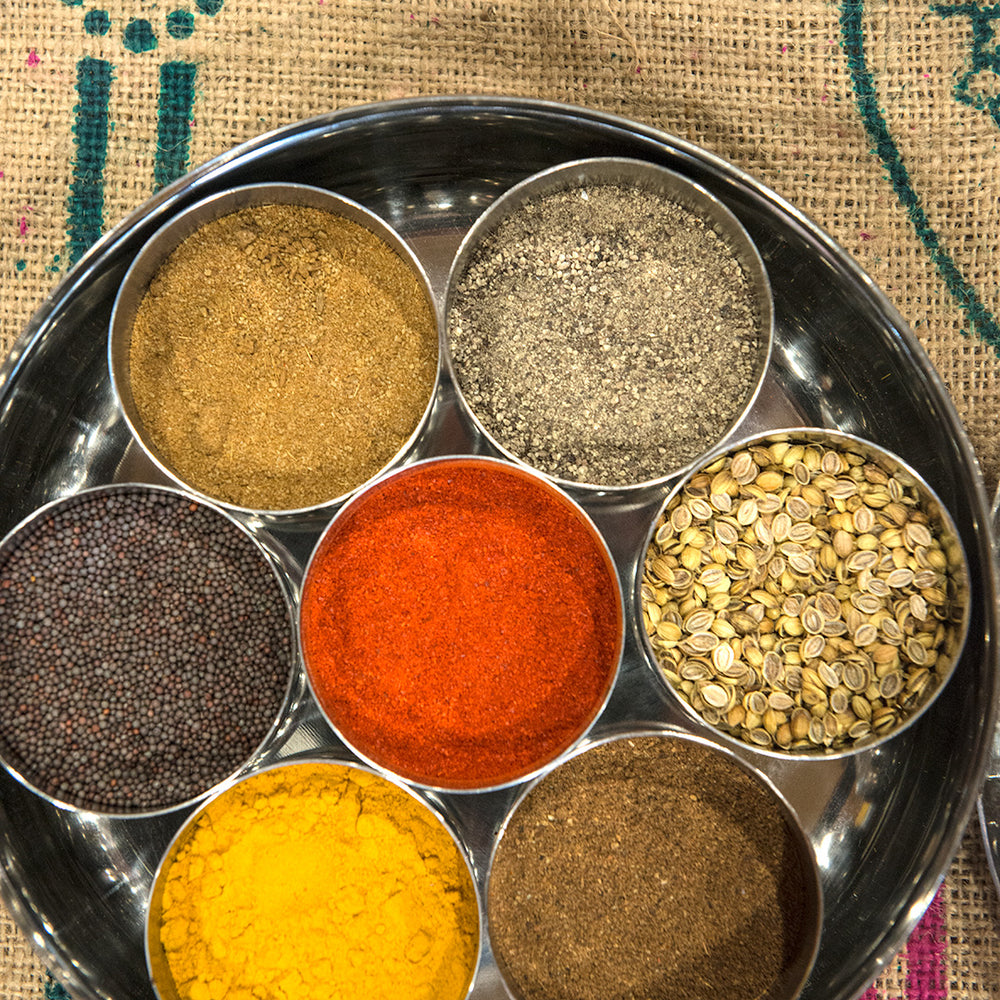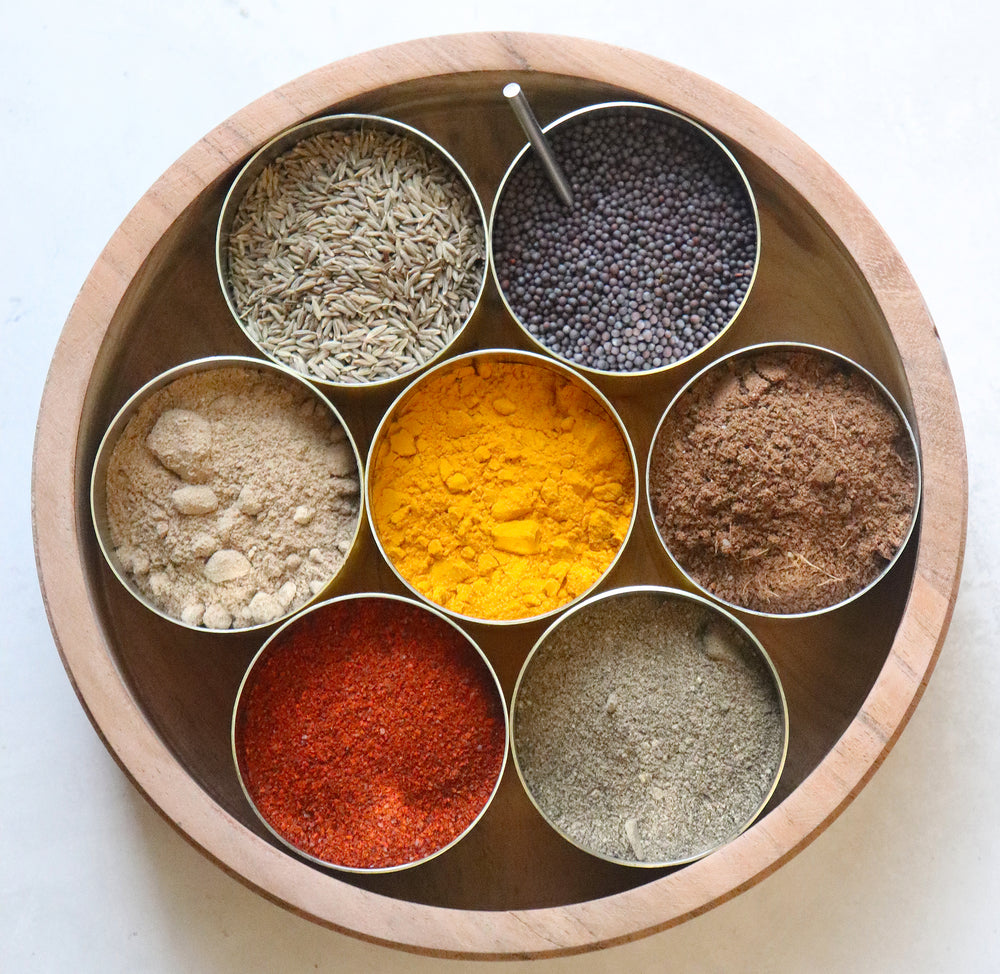
45 Min
DF
GF
NF
V
Swiss Chard Pilaf
Consuming cooling foods such as crudités, salads and lassis in the summer and warming foods (spicy rich stews and soups) in the winter seems like common sense — it also happens to be one of Ayurveda’s basic tenets. This often clashes with Texas growing seasons because lettuces and hardy greens thrive under cooler conditions and flail in the scorching heat.
Determined to eat as many local vegetables as I can, I instinctively find myself either lightly sautéeing the heartier greens, dropping them into soups or curries at the last minute or tossing delicate torn lettuce leaves into warm rice or quinoa pilafs. So last week when the smiling vendor at Sustainable Harvesters at the Urban Harvest farmers market handed us a giant, gorgeous bunch of fuchsia- and turmeric-colored Swiss chard, I knew exactly what I was going to do with it.
There are many reasons to incorporate chard into our daily diet. A descendant of the wild beet, Swiss chard is not from Switzerland (it was named by a Swiss botanist) but grew wild in parts of the Mediterranean, particularly Sicily, Italy. In medieval times, when medicine came from food, chard was used to alleviate chronic pain, allergies and constipation. High in antioxidants and dietary fiber, one cup of braised chard provides more than the recommended daily dose of vitamin A. Enjoy this pilaf with soup or dal, curried lentils.
Consuming cooling foods such as crudités, salads and lassis in the summer and warming foods (spicy rich stews and soups) in the winter seems like common sense — it also happens to be one of Ayurveda’s basic tenets. This often clashes with Texas growing seasons because lettuces and hardy greens thrive under cooler conditions and flail in the scorching heat.
Determined to eat as many local vegetables as I can, I instinctively find myself either lightly sautéeing the heartier greens, dropping them into soups or curries at the last minute or tossing delicate torn lettuce leaves into warm rice or quinoa pilafs. So last week when the smiling vendor at Sustainable Harvesters at the Urban Harvest farmers market handed us a giant, gorgeous bunch of fuchsia- and turmeric-colored Swiss chard, I knew exactly what I was going to do with it.
There are many reasons to incorporate chard into our daily diet. A descendant of the wild beet, Swiss chard is not from Switzerland (it was named by a Swiss botanist) but grew wild in parts of the Mediterranean, particularly Sicily, Italy. In medieval times, when medicine came from food, chard was used to alleviate chronic pain, allergies and constipation. High in antioxidants and dietary fiber, one cup of braised chard provides more than the recommended daily dose of vitamin A. Enjoy this pilaf with soup or dal, curried lentils.

45 Minutes
4

Notes & Variations
- Instead of rice, use white quinoa. Quinoa does not need to be soaked, and the portions remain the same.
- Instead of chard, use kale, mustard greens, or dandelion greens.
- To turn this pilaf into more of the main course, add sliced chicken or shrimp when sautéing the leeks.

Notes & Variations
- Instead of rice, use white quinoa. Quinoa does not need to be soaked, and the portions remain the same.
- Instead of chard, use kale, mustard greens, or dandelion greens.
- To turn this pilaf into more of the main course, add sliced chicken or shrimp when sautéing the leeks.
Tags:

Stock Your Pantry
Tags:

Stock Your Pantry















